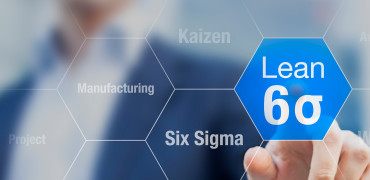Are you a procrastinator? Do you put things off till the last minute because of the enormity of a task, and then panic you’ve only got a few days to do something? That’s ok…..most of us do, and I was one of them, until I embraced the meaning of Kaizen.
Kaizen is a Japanese word. Kai means Change, and Zen means Good. So literally translated Kaizen means Change Good.
The philosophy behind Kaizen is all about continuous improvement with small changes. Taking small steps forward or small changes will lead to bigger improvements. In fact the Japanese use the Kaizen approach not just as an approach to work, but as a way of life.
The theory is, if you want to improve, you need to make it a habit.
But big changes quickly, can be quite overwhelming, so Kaizen embodies doing things step by step, little by little, because then it’s easier to make a start, easier to manage, and more importantly continually improve what you are doing. The beauty in taking the Kaizen approach is that small changes require minimum cost.
How good does it feel to complete something you’ve had on your list for weeks
Let me give you an example of how Kaizen inspired me to change my life.
Running has been an activity I have steered clear of most of my life. At school I was rubbish. Cross country running was my worst nightmare, and I usually came last. The teacher always had to wait for me to finish, and sometimes it went dark before I completed the course.
Recently, in an attempt to get fit, I faced my fear and got on the treadmill.
I set myself a small goal of 3 minutes for my first run. Little by little I added on a minute every couple of weeks.
Now I’m up to 32 minutes running non-stop, and really enjoy it.
Kaizen at Mitsubishi Electric
Kaizen is something we use at work too. Mitsubishi Electric is synonymous with Kaizen. Mitsubishi Electric’s corporate strapline ‘Changes for The Better’ is really all about continuous improvement. The Corporate strapline is almost giving us permission to make changes to improve our working life.
As part of a Lean Sigma drive towards providing process excellence and customer satisfaction, we have been undertaking Kaizen workshops to help improve our daily business processes.
We map out the end to end process, and see if we have any waste which can be removed. Small changes like condensing data entry to one platform, or automating workflows to improve speed, can have many benefits and often enable the waste to be removed in a process very easily.
Usually the improvement is at minimum cost, and the results are tangible for internal staff, and evident for our customers by way of convenience.
We have a new Kaizen workshop taking place very soon, and I’m excited to see where our improvements are going to come from.
So how did Kaizen first come about?
The principal of Kaizen circumnavigated the Second World War and the rise of the Japanese car manufacturing industry.
Just after the Second World War, Dr. W. Edwards Deming introduced his principles of how to improve the quality and process of manufacturing cars such as Toyota and Honda.
Deming didn’t believe that change has to be big straight away to have the desired effect. In fact, his rational was to focus on the extremely small things that can be improved every day. One of Deming’s 14 core points for Management was to “Improve constantly and forever the system of production and service to improve quality and reduce waste”.
Deming believed this would give the Japanese car manufacturers the power to dominate the entire automobile market. His vision was that within 5 years they would flood the world with their high quality products. At the time this seemed like a ridiculous vision, but over time, those small improvements that happened at the very bottom of the manufacturing chain, eventually had a massive effect. This revolutionised the Japanese car manufacturing industry and the global economy. Other global companies like Sony and Fuji saw similar success. Now the highest honour a Japanese company can receive is the National Deming Prize.
Although it was evident that Kaizen ethics were entrenched within Deming’s work, it wasn’t Deming that coined the philosophy of Kaizen, this was Masaaki Imai. During the rise of the car manufacturing industry at Toyota, the Japanese had developed what is now known as Lean manufacturing. Kaizen is a tool that sits within Lean to enable continuous improvement.
From theory to world-wide phenomenon
Masaaki Imai (born, 1930) was a Japanese organisational theorist and management consultant, known for his work on quality management, specifically on Kaizen.
In 1985 he founded the Kaizen Institute Consulting Group (KICG) to help western companies introduce the concepts, systems and tools of Kaizen. Masaaki Imai made the term famous in his book Kaizen: The Key to Japan's Competitive Success.
Other tools apart from Kaizen, that enable small continuous improvement practises are things like Just in Time (JIT) Total Quality Production (TPM), the 5Y’s, the 5S Rule, and Kanban. You may already have heard of some of them but the list is extensive.
Today Kaizen is used in businesses all over the world, and is a highly effective and fun way to help people see where the improvements within the process are needed, and how we can go about slowly changing them for the better. It’s worth noting Lean methodologies have translated perfectly into businesses that sell service as their product.
Celebrate the Feel Good Factor
For me, improvements need to be celebrated.
How good does it feel to complete something you’ve had on your list for weeks, sometimes months…even years?
How good does it feel to go home and not worry about this huge task the next day, because you’ve taken the Kaizen approach and are doing it little by little?
How good does it feel for me to know I can run further now than I could at 13?
Celebrating is all part of continuous improvements, because it’s the encouragement that’s needed to do it all again the next day.
So whether it’s a high five all round, or perhaps you baked a cake for everyone to share, make sure you celebrate successes and improvements no matter how small.
Disclaimer: Not all cakes are made for sharing.
Emma Gold is Customer Service & Operations Manager at Mitsubishi Electric and a Black Belt in Lean Six Sigma
If you have any questions about this article, you can contact us via email. Or if you would like to tweet us, please follow our MEUK_LES twitter page.
We upload new articles every week so remember to check back regularly.
You can also sign up for our monthly newsletter below.



